- Home
- Painting a Storm
Painting A Storm -
Let's Get All Dramatic
It’s not all Pthalo Blue and Cadmium Yellow Light you know. Just like enjoying the roller coaster ride of our moods, it’s sometimes wonderfully self-indulgent to immerse yourself in the somber side of life and have a go at painting a storm.
On the surface, greys and muted tones could seem a little dull. But nothing could be further from the truth. There is always unexpected colour, and a mood that can be exaggerated and highlighted. Perfect for making stormy paintings.
Using a moody palette could at first seem to be limiting in some ways. But like everything, the deeper you look, the more you find.
Even in a canvas that is laden with grey and heavy skies, there is the potential for so much nuance. As an example, dark trees silhouetted against the skies, and bent by a howling wind, a flash of light breaking through the cloud, and a hint of turquoise in the ocean as a wave throws itself against rocks.
Another contrasting example that springs to mind is the same sky, the same trees, but an oily sea, with an almost mirror like reflection, and some glazes to subdue the distance, and the scene is transformed to the calm before the storm. A few small changes, and an entirely different story is told. We'll do an exercise using this example a little later.
Sometimes when I’m stuck, I’ll throw some paint at a canvas, swirl it around and see if a painting appears in the mess that’s left. This process works fantastically if you’re painting a storm using those lovely muted greys, throwing the paint on, throwing some water at it, and letting it do it’s thing. This can often give you an incredibly compelling stormy sky that you never would’ve achieved if you had “tried” to paint it. It can make a sensational backdrop that will send your painting in a direction you may not have considered. Scroll down to the end of this page for another example of this.
When you start looking closely at even very gloomy skies, you’ll start to see the influence of quite unexpected colour. The rule of “warm to cool” (ie warmer colours closer to the light source, cooler colours as you moved further away from the light source) is a nice place to start looking.
Often the sun, while obscured, still influences the colours in the clouds. The darker areas created by denser cloud cover can often tend towards pthalo blues. (Cool). As you get closer to a light source, or to gaps in the cloud, you’ll discover some French Ultramarine, some Dioxazine Purple, and even Cadmium Yellow Medium can influence your greys. Grey is not grey. I recommend sitting for a while, perhaps with a camera, and really studying the nuance in grey stormy skies. Sometimes the camera will exaggerate contrast and colour, so it’s a handy tool to start looking for these shifts. Going into a painting a storm “educated”, usually prevents a lot of suffering (not all though!).
Often a painting doesn’t work whether it be moody or otherwise, because of an inability to see and translate nuance. Grey skies are a great place to look because it restricts the range of colours and contrast and allows you to focus in, rather than being distracted by too much information. Let's have some fun experimenting with painting a storm now.
Painting a Storm - An Exercise
Let's see what happens if we start with the same scene, yet change our brushstrokes slightly to create two completely different moods.
Let's start with the two canvases with the same background. I've used Dioxazine Purple, Cadmium Yellow Medium, Pthalo Blue and Carbon Black in the Atelier Free Flow range to paint the background stormy sky and water.
Blocking in - Canvas 1 and 2:
I used a mix of Burnt Umber and Pthalo Blue to block in the foreground rocks. I added Forest Green to this colour and blocked in the foreground trees as well. I added sky colour (in this case a loose mix of black and white) to block in the background trees and rocks.
Canvas 1: Stormy, windy scene shown through the bend in the trees and whitecaps. Subtle brushwork to create ultra mood.
Canvas 2: The calm before the storm - reflective water and upright trees convey that sense of smooth, calm unease you feel before a storm hits.
For the finishing touches on this exercise, the whites have been tinted with a little bit of the grey to subdue it a little. For Canvas 1, the brushtrokes were shorter and applied with more vigour, and drawn out and more softly applied in Canvas 2
Hope you enjoyed this little demo on painting a storm using the same background. Want even more ideas for painting a storm using a pour to begin? See the Youtube clip below. Cheers!

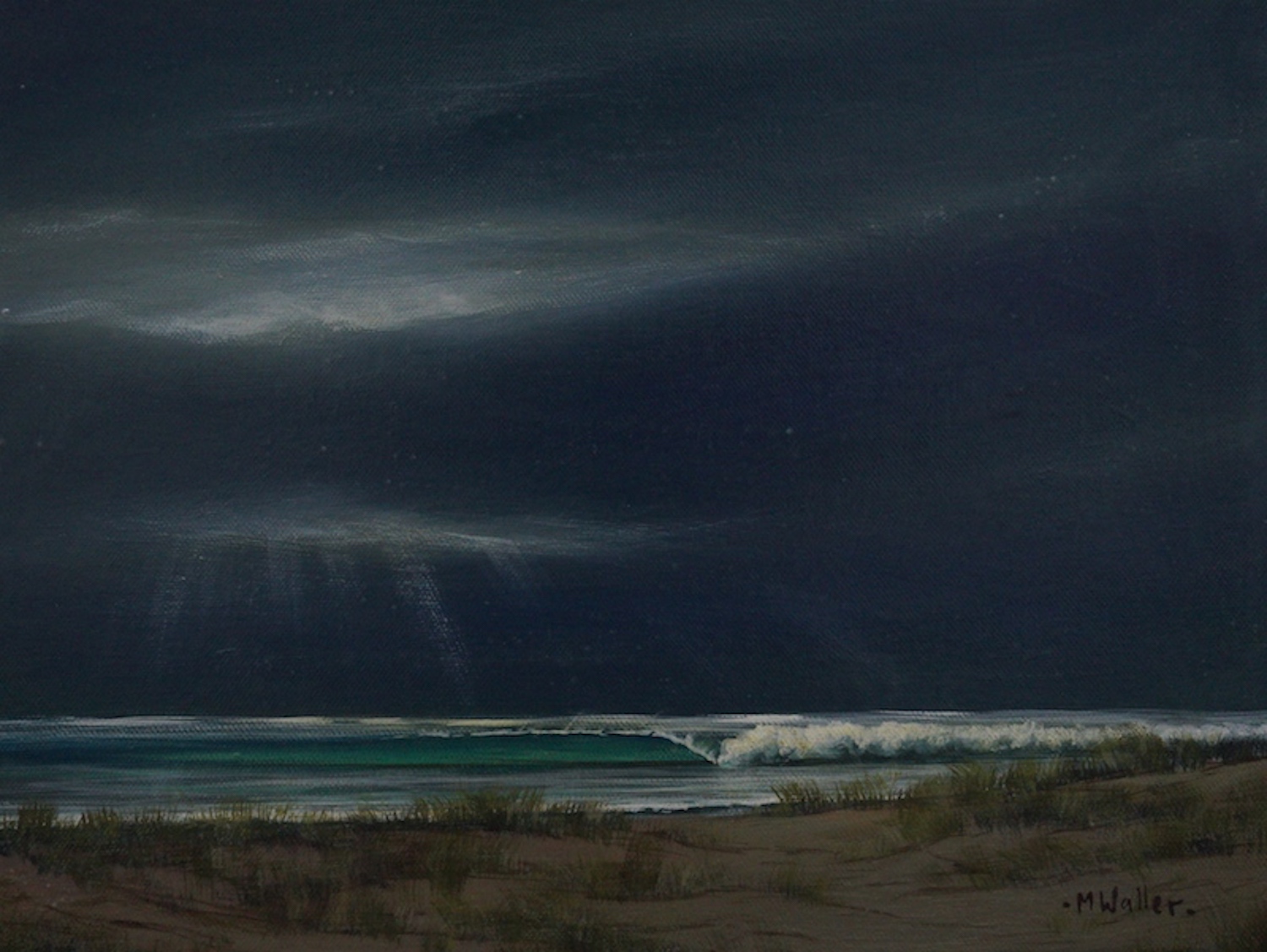
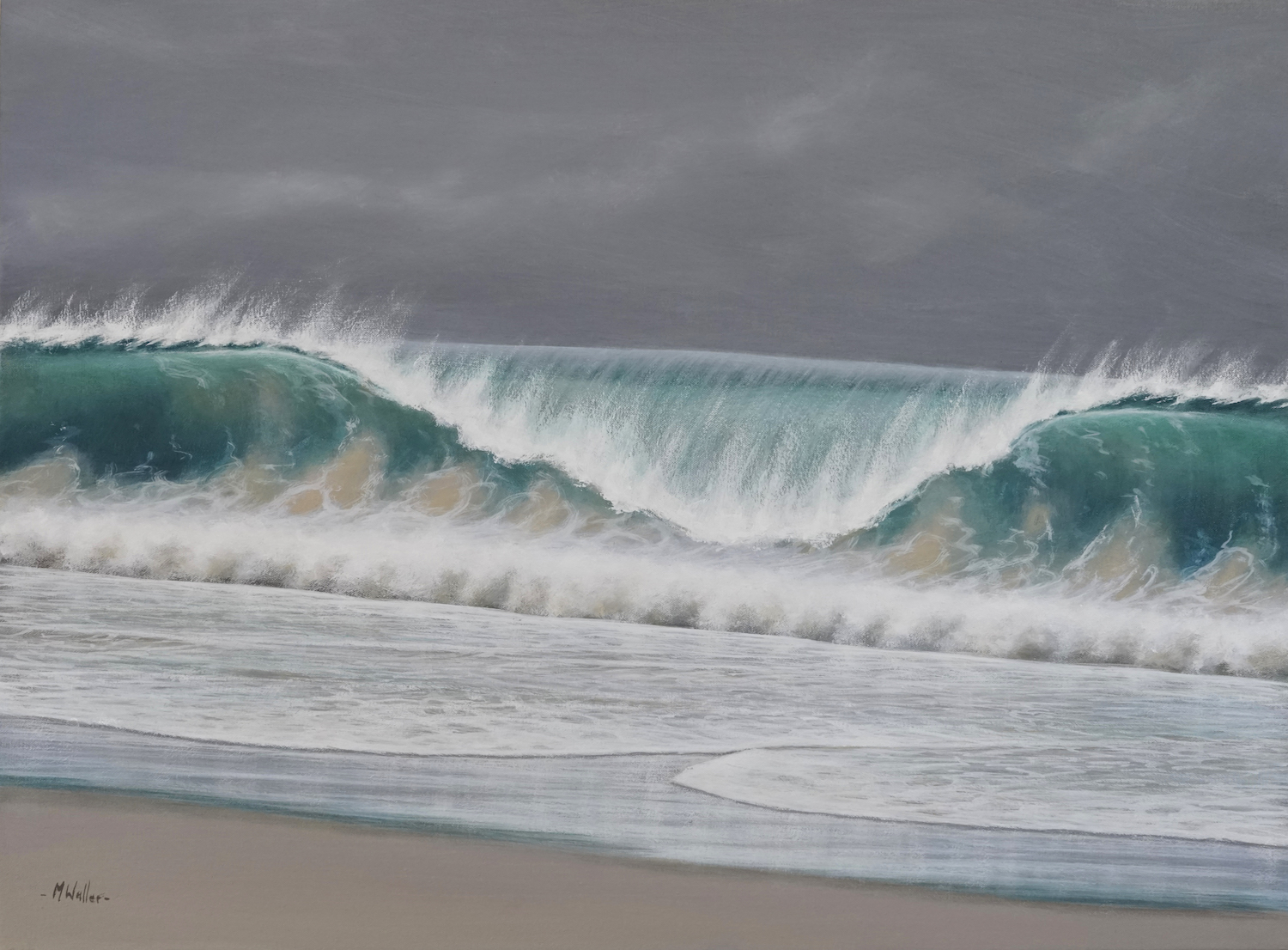
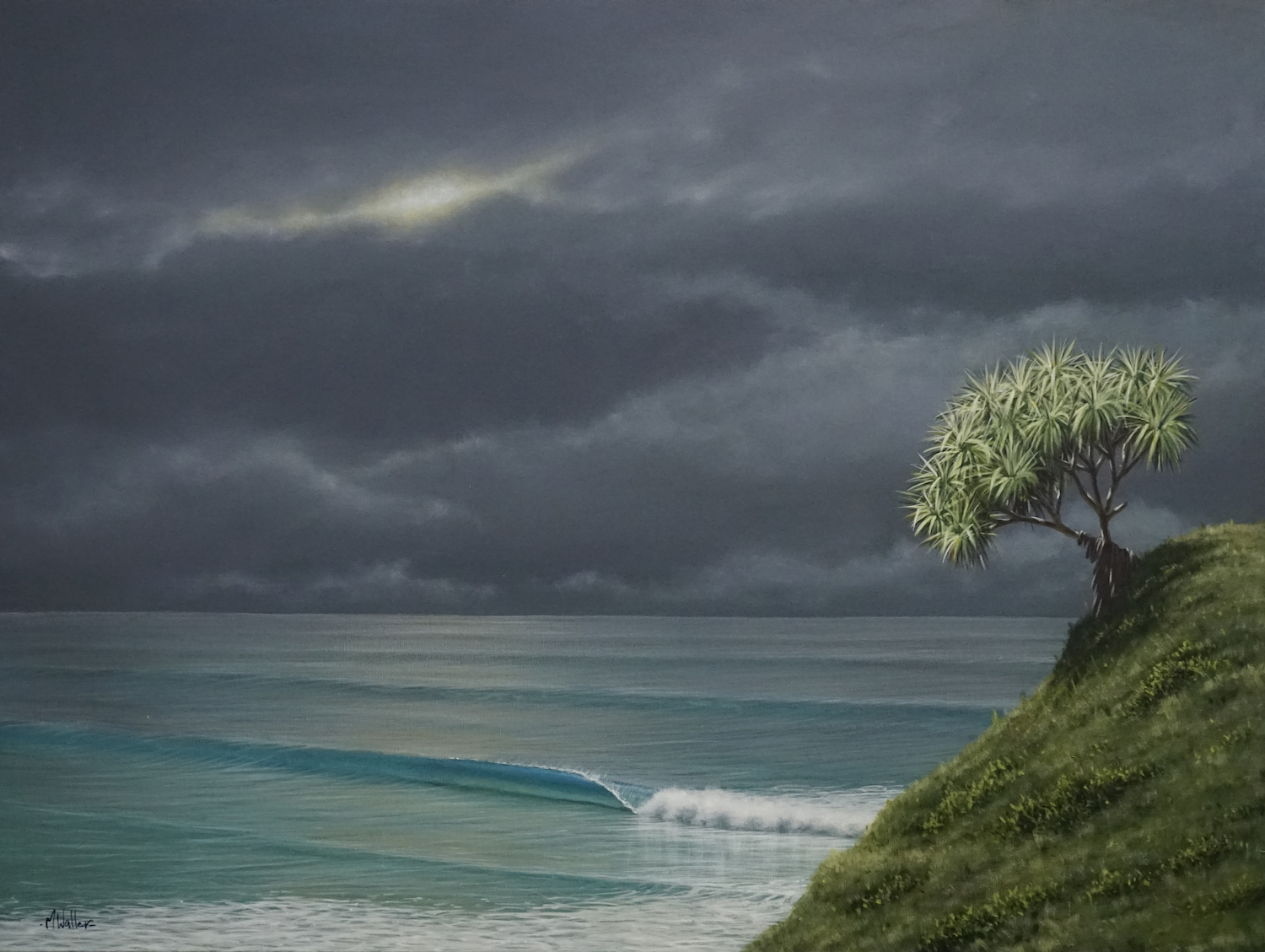
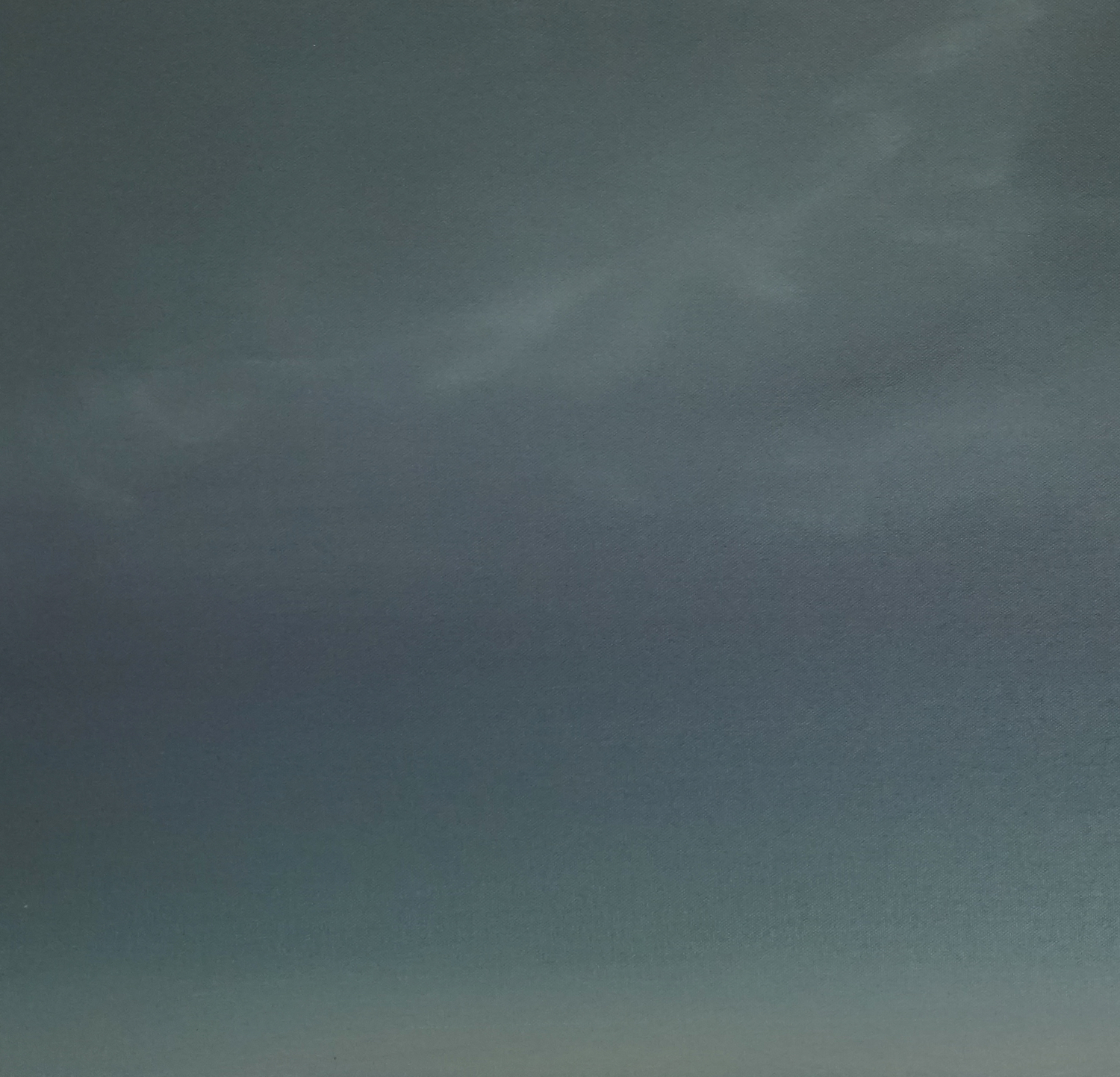
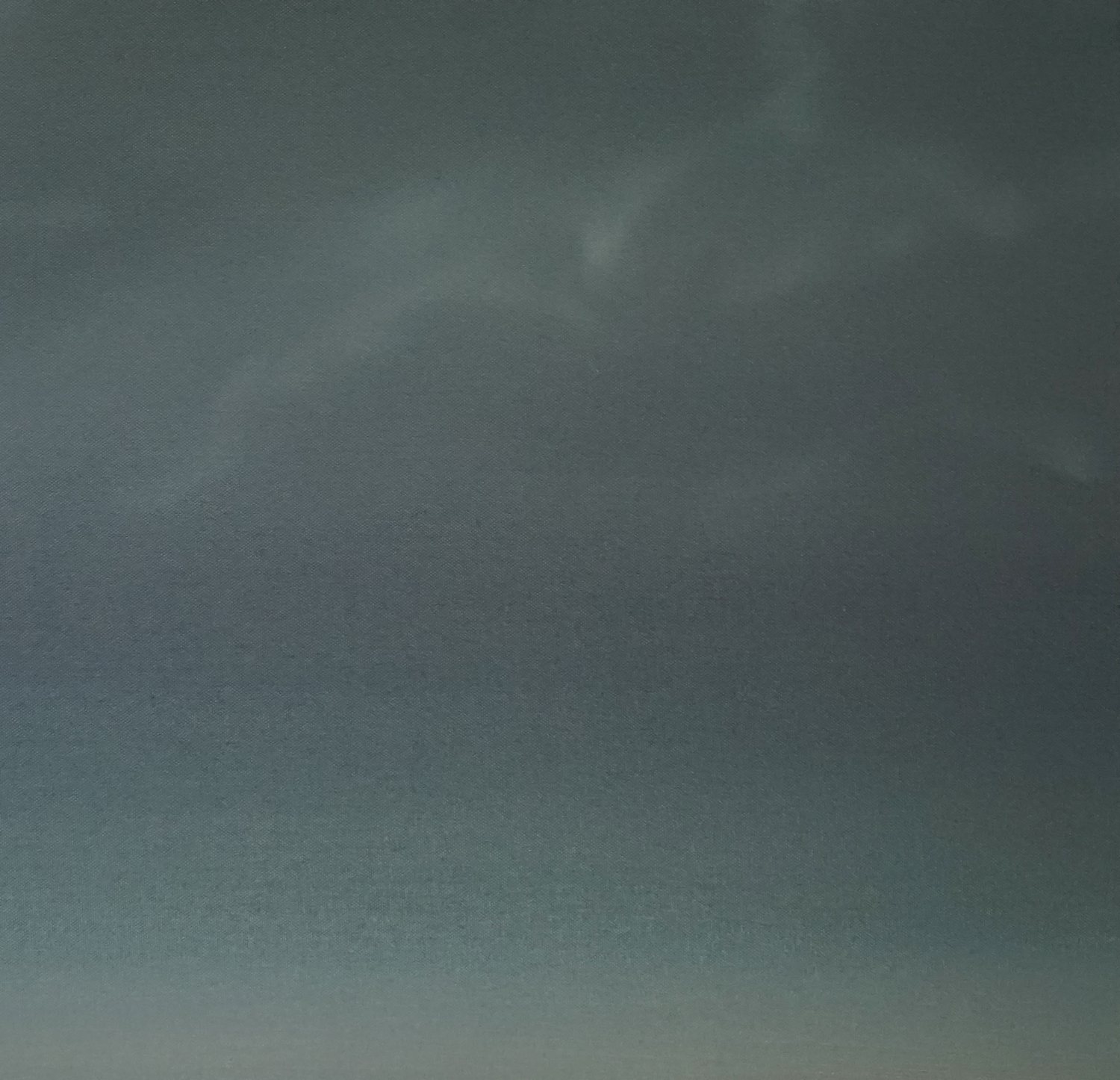
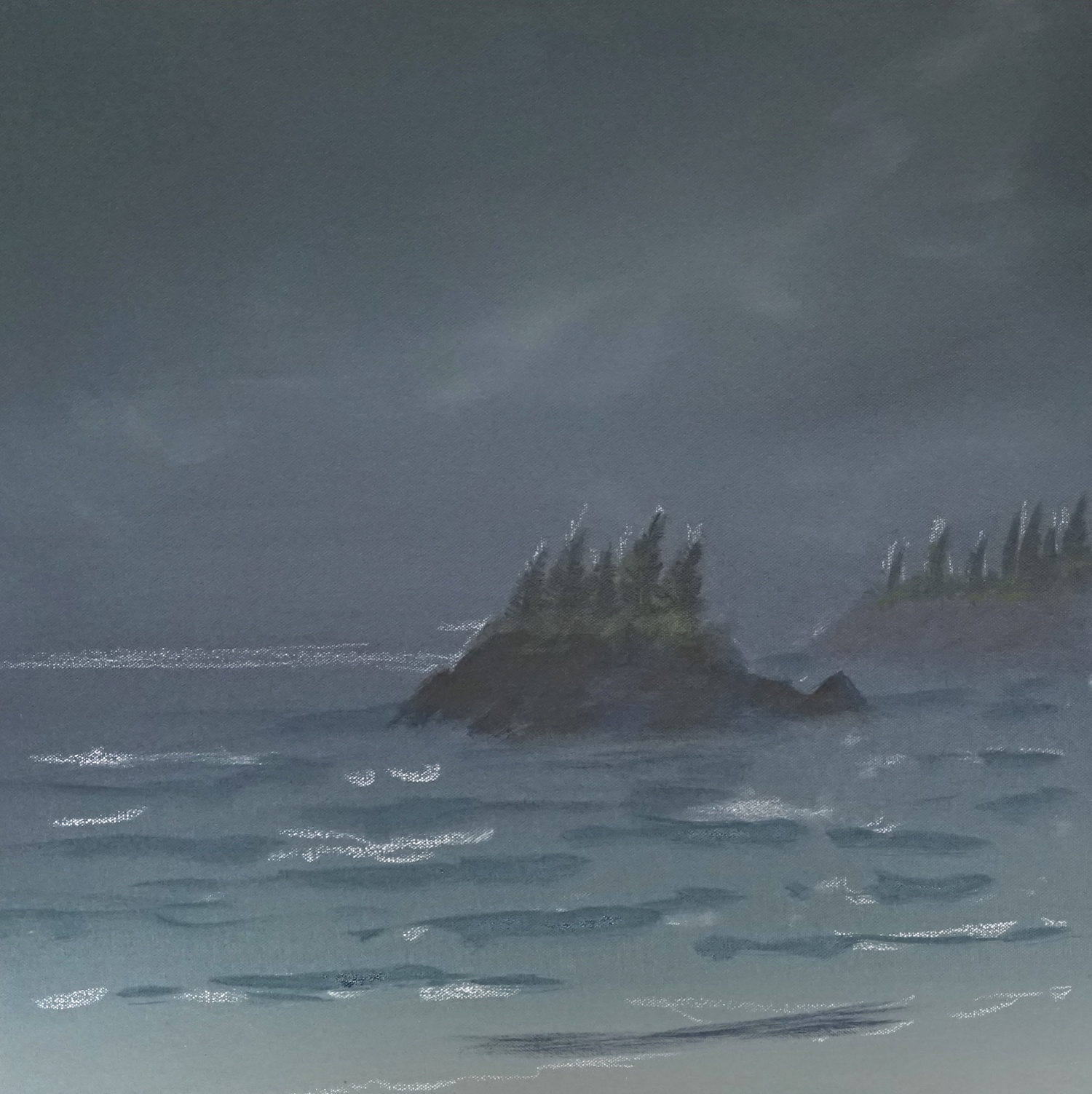
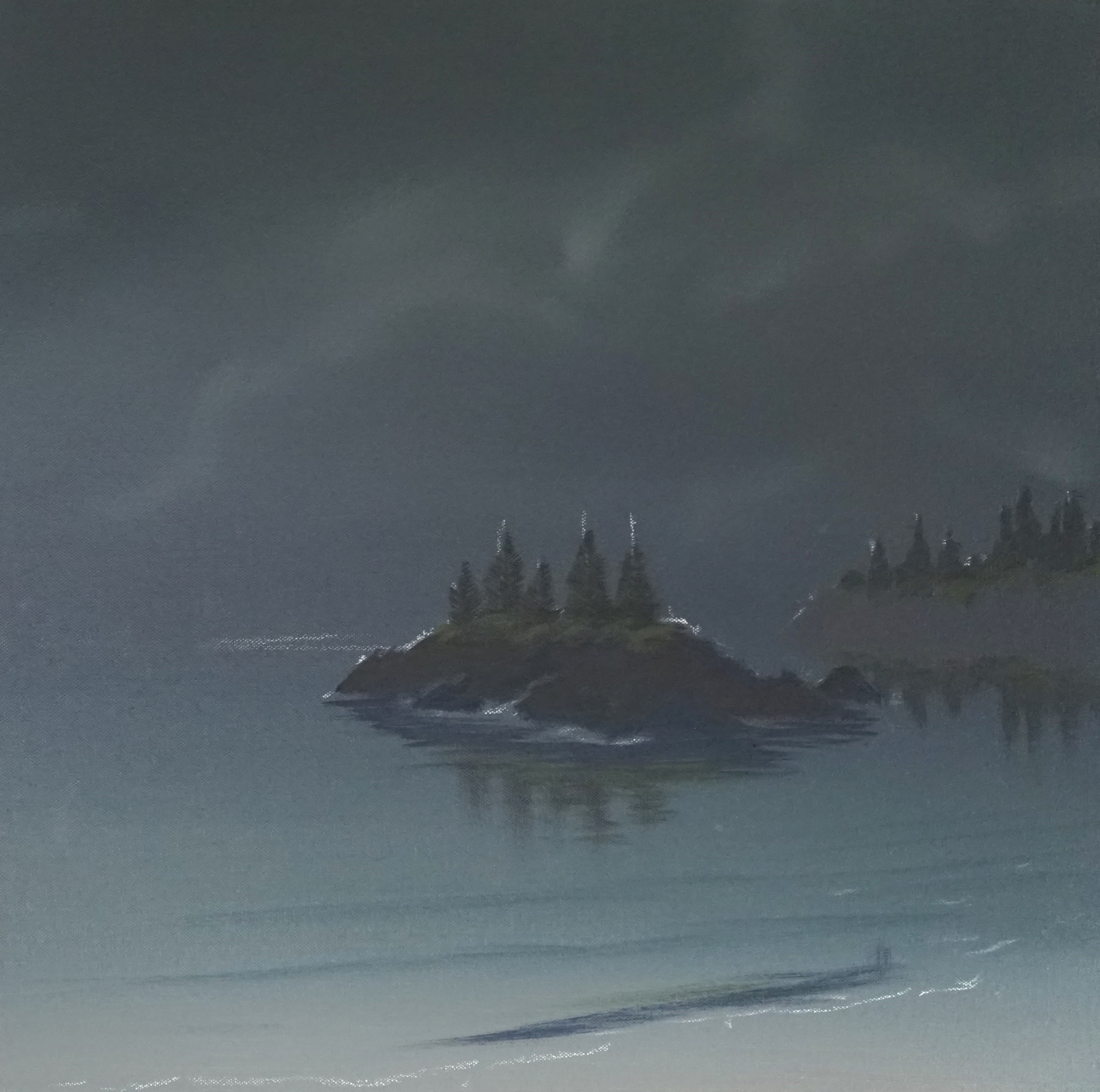
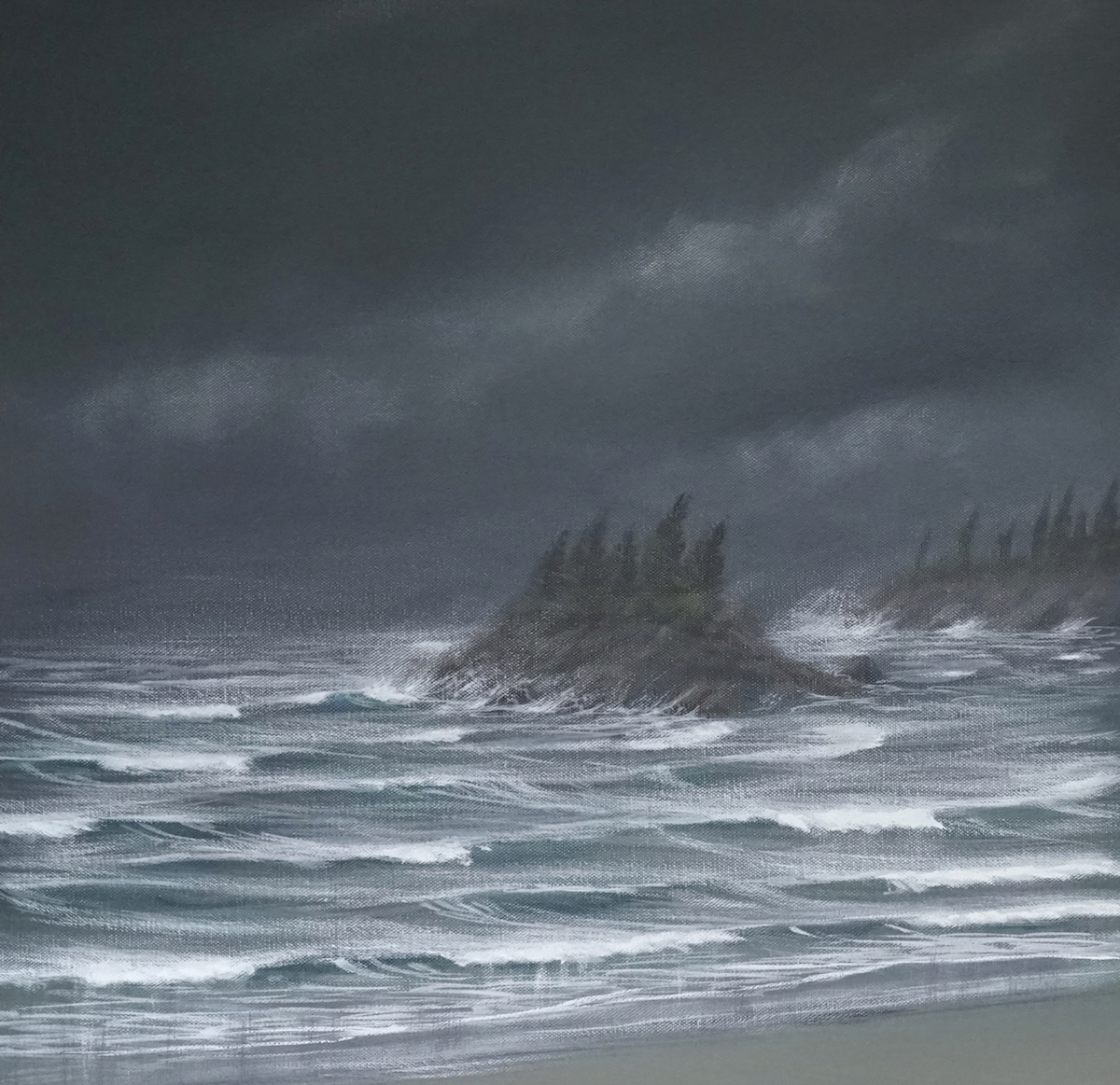
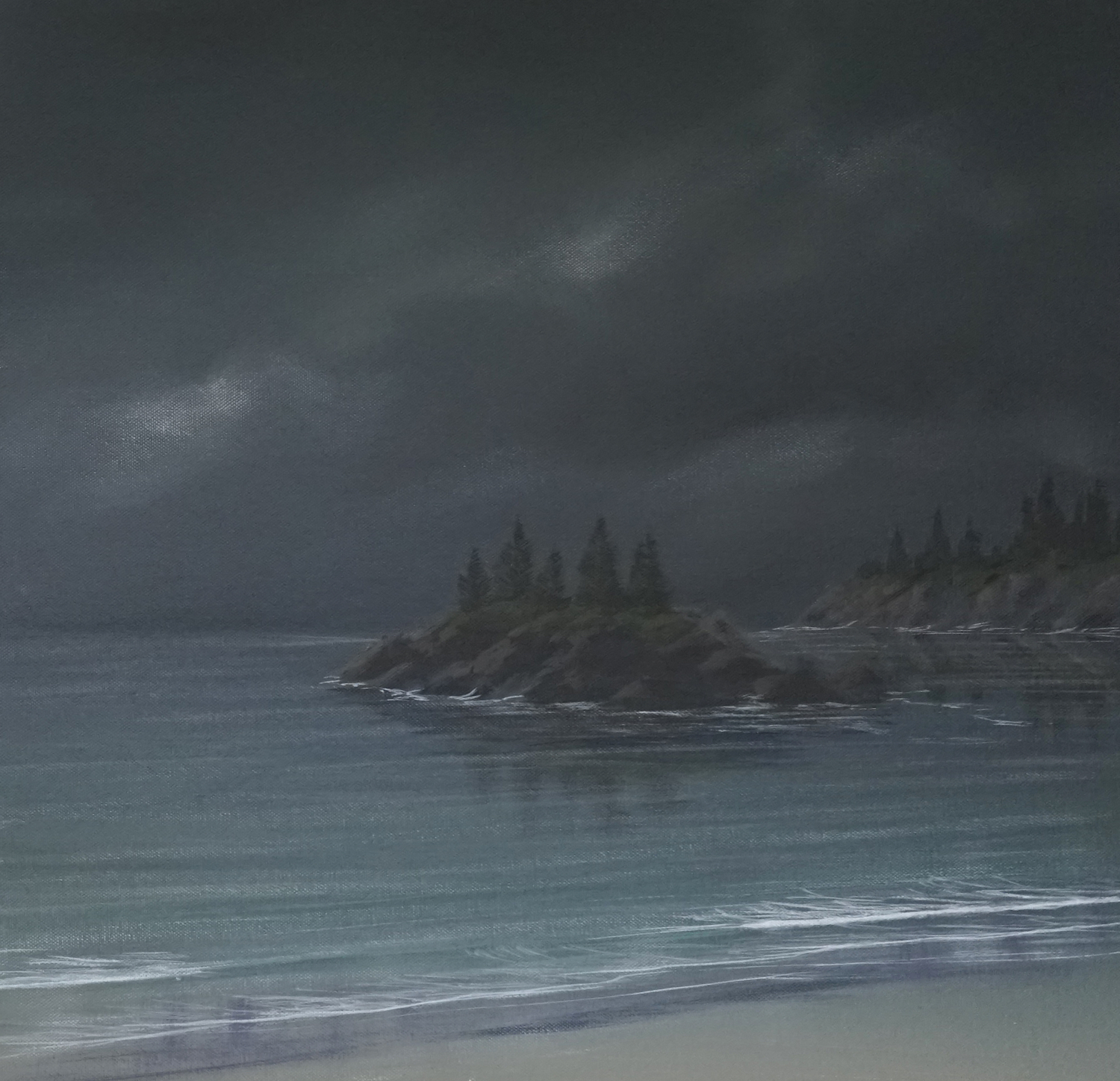














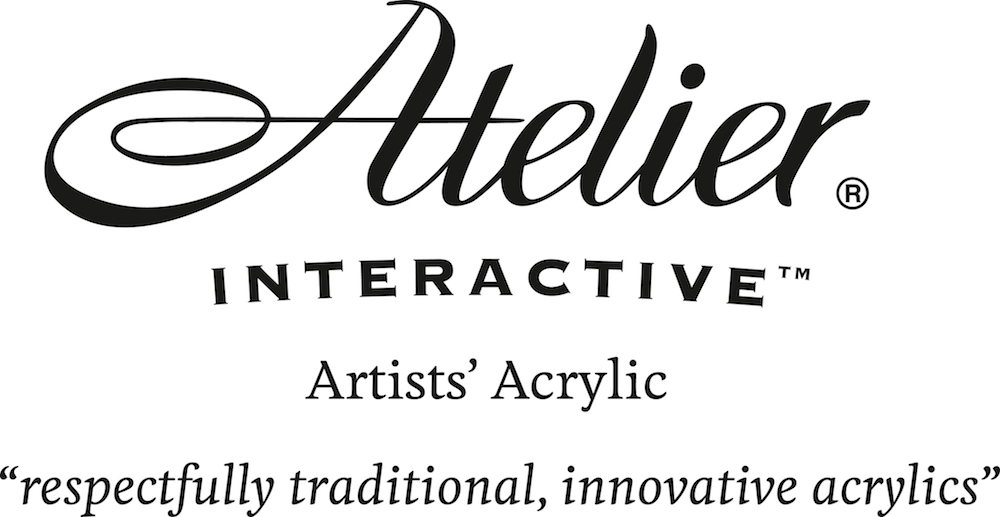


New! Comments
Have your say about what you just read! Leave me a comment in the box below.